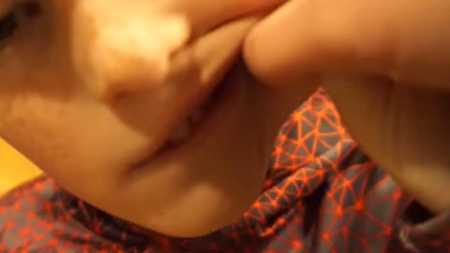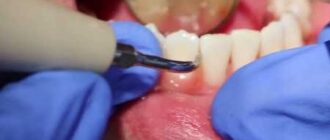Inflammatory gum disease in adults and children is called gingivitis. It is most common in children in the few months from birth to 13 years of age, due to the peculiarities of the child’s body and poor oral hygiene.
Children often face oral diseases, especially gingivitis. Read our article on how to recognize it and how to treat it.
According to statistics, a child from 2 to 4 years of inflammation of the gums is noted in 2% of cases, and by 13 years of age the proportion of this disease in children already reaches 80%. Time-treated gingivitis does not develop into a chronic form, but if not treated, it can cause periodontal disease.
Types of Gingivitis
There are several types of gingivitis in children. Usually they are diagnosed with the catarrhal form of the disease, it occurs due to poor dental care. The acute form of the disease occurs due to injuries to the gums or teething.
The more severe form of the disease, ulcerative gingivitis, is caused by bacterial (viral) infection, hypothermia, or as a complication of catarrhal gingivitis.
Causes of Gingivitis in Children
There are many causes for pediatric gingivitis. Gums become inflamed due to the functional immaturity of their tissues. In babies under a year of age, the cause of the disease is often teething, when the gums are red and sore. Sometimes the inflammation is caused by an allergic reaction to food.
In adolescents, the disease can manifest itself due to the teething of a permanent tooth. When its soreness during brushing does not allow this procedure to be done properly, germs multiply and gum inflammation develops.
The most common factors that provoke older children to develop gingivitis are:
- Microbial action
In 90% of cases, the disease appears in a child due to insufficient oral hygiene, resulting in increased reproduction of microorganisms, formation of plaque, tartar, and stomatitis.
- Mechanical trauma
The integrity of the mucosal cavity can be compromised by teething, cuts, scratches, burns, biting, improper brushing, and eating hard foods.
- Oral infection sites
If children have decayed teeth, there is a chance that they will develop infectious gingivitis that affects the gums. Therefore, teeth that require treatment should be treated as soon as possible.
- Excessive stress on the maxillary system
Other causes of gum damage in children may include:
- The presence of a malocclusion;
- Unsustainable diet with a lack of fruits and vegetables;
- Uneven loading of the maxillary system due to bad habits;
- defects of the oral cavity (short frenulum of the tongue, lips);
- The presence of dental caries, various infections;
- Thermal burns from hot food;
- Wearing braces.
Symptoms
Gingivitis has the main sign, by which it is easily determined – inflammation affecting the gums of the child. The process begins with a slight redness, quickly gaining strength. This signal often goes unnoticed by parents, and children visit the dentist with active inflammation, bright red swollen gums, burning, pain. These signs indicate that the disease has entered the acute phase.
Children are most affected by the catarrhal form of this disease, which can be chronic or acute. In the first case, the symptoms are not pronounced, the pain occurs only when brushing, there is a slight swelling, redness, blueness of the gums.
The sign of the acute form of the disease is intoxication of the child’s body. It is manifested by headache, nausea, lethargy, fever.
The most complex type of disease, ulcerative gingivitis, manifests itself as follows:
- The inflammatory process progresses;
- Their structure changes;
- Bad breath appears;
- The lymph nodes in the neck are enlarged;
- Saliva is excreted profusely;
- The skin becomes pale.
If these signs are left unchecked, the ulcerative-necrotic form of the disease may set in, with necrotic areas on the gums with a gray-green plaque and putrid odor, the saliva becomes viscous, body temperature increases, and the general condition worsens considerably. All this indicates severe intoxication in the body.
During puberty, or if a teenager has problems with his hormones, hypertrophic gingivitis is observed. It occurs due to improper orthodontic treatment of dental anomalies. The inflammatory process in this case is accompanied by increased growth of the gum tissue, which leads to partial closure of the dental crowns. This form of the disease is usually localized. It affects one or two gums, sometimes the affected area is enlarged. The site of localization is most often the front lower incisors and canines.
Atrophic gingivitis does not have a pronounced inflammatory process, it is painless, although over time it can be complicated by periodontal disease.
Diagnostic Methods
The diagnosis is made by the doctor based on the results of the study of the medical history and life history of the child, combined with a dental examination. The patient’s complaints, the presence of diseases of a somatic nature, whether there is the taking of medications that may be the cause of the development of gingivitis are clarified.
Then the doctor conducts an external examination, paying attention to the maxillofacial anomalies, the condition of the teeth and gums, and makes a diagnosis. The help of other specialists to the dentist is not required, because the disease is clearly visible externally and does not require instrumental examination.
Treatment
The treatment of children’s gingivitis is almost no different from how adults are treated. Only the drugs used for them are softer and gentler. The treatment begins with professional cleaning of hard deposits and plaque on tooth enamel – mechanical or ultrasonic.
If the examination reveals caries, it is treated therapeutically. Then gingivitis is treated with medicines with antiseptic and anti-inflammatory properties. Measures are taken to eliminate detected abnormalities (correction of bite, frenulum, etc.)
Ointments and gels are considered effective for babies under 4 years of age. For example, Holisal ointment has analgesic and anti-inflammatory properties, which allows it to be prescribed to relieve pain, especially when deciduous or permanent teeth are cutting. Ointments and gels are applied directly to the inflamed area.
Antibiotics in tablets or as injections are prescribed for children in complicated cases (the presence of infections of bacterial origin in the body). In cases of fever, gargles, plenty of fluids, antioxidants, children’s antipyretics and vitamins are prescribed.
Preventive measures include regular visits to the pediatric dentist, teaching oral care, and monitoring the parents for hygiene habits.






